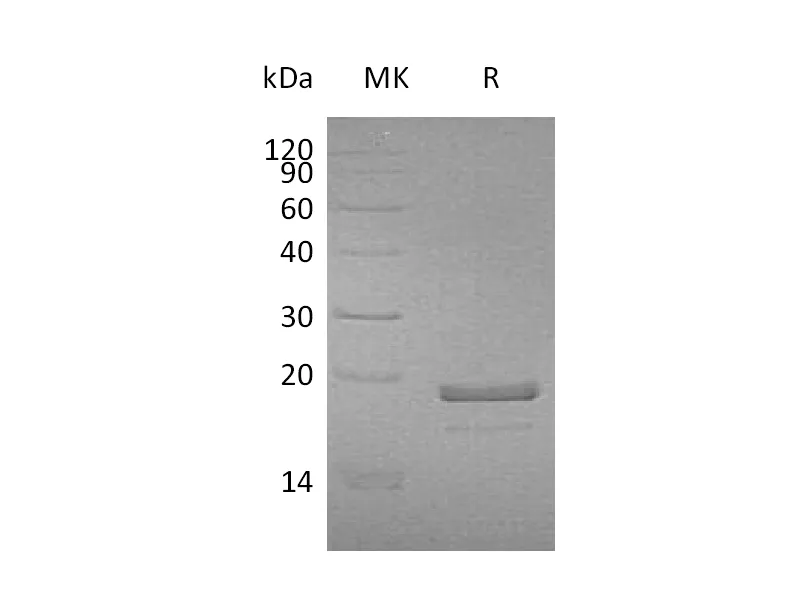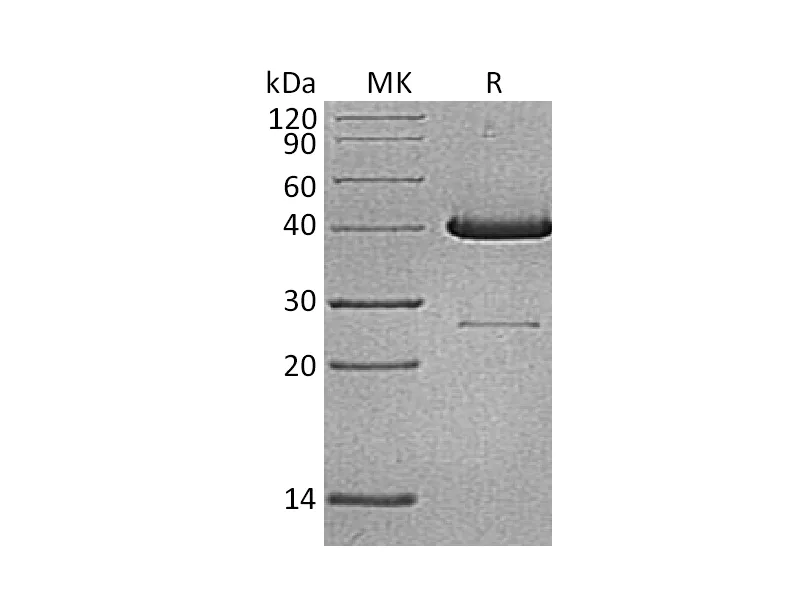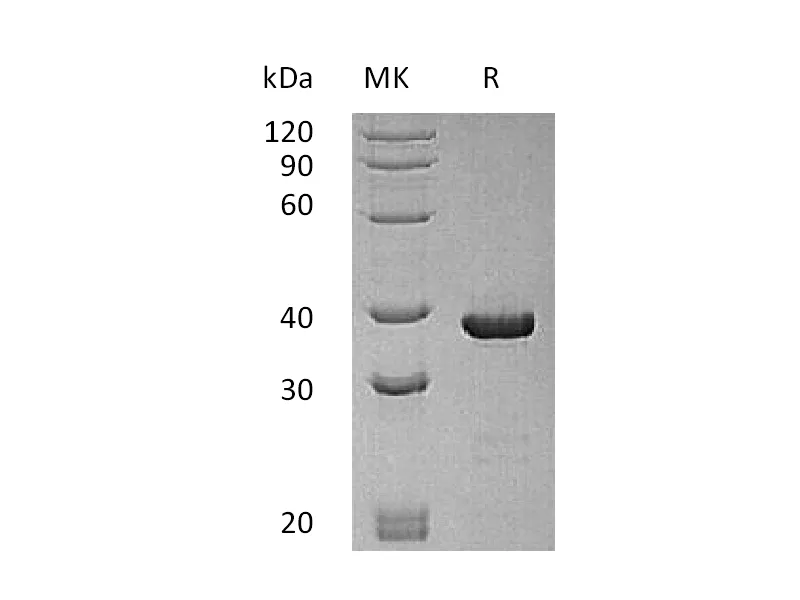| 产品名称 |
Recombinant Human ANGPTL3 (C-Fc) |
| 英文名称 |
ANGPTL3/Angiopoietin-related Protein 3 |
| 纯度 |
Greater than 95% as determined by reducing SDS-PAGE |
| 内毒素 |
<1 EU/µg as determined by LAL test. |
| 蛋白构建 |
Recombinant Human Angiopoietin-related Protein 3 is produced by our Mammalian expression system and the target gene encoding Ser17-Pro220 is expressed with a human IgG1 Fc tag at the C-terminus. |
| Accession |
Q9Y5C1 |
| 表达宿主 |
Human Cells |
| 种属 |
Human |
| 预测分子量 |
50.7 KDa |
| 制剂 |
Lyophilized from a 0.2 μm filtered solution of PBS, 5% Trehalose, pH 7.4. |
| 运输方式 |
The product is shipped at ambient temperature.Upon receipt, store it immediately at the temperature listed below. |
| 稳定性&储存 |
Store at ≤-70°C, stable for 6 months after receipt.Store at ≤-70°C, stable for 3 months under sterile conditions after opening. Please minimize freeze-thaw cycles. |
| 复溶 |
Always centrifuge tubes before opening.Do not mix by vortex or pipetting.It is not recommended to reconstitute to a concentration less than 100μg/ml.Dissolve the lyophilized protein in distilled water.Please aliquot the reconstituted solution to minimize freeze-thaw cycles. |
| 分子别名 |
| Angiopoietin-related protein 3; ANGPTL3; Angiopoietin-5; ANG-5; Angiopoietin-like protein 3; ANGPT5 |
| 背景介绍 |
| Angiopoietin-like 3 (ANGPTL3) is a secreted glycoprotein that is structurally related to the angiopoietins. Mature human ANGPTL3 contains an N-terminal coiled coil domain and a C-terminal fibrinogen-like domain. ANGPTL3 is expressed in the liver from early in development through adulthood. Full length ANGPTL3 circulates in the plasma as do the proteolytically separated N-and C-terminal segments containing the coiled coil domain and fibrinogen-like domains,respectively. ANGPTL3 directly inhibits lipoprotein lipase (LPL) and endothelial lipase (EL), enzymes responsible for hydrolyzing circulating triglycerides and HDL phospholipids. ANGPTL3 promotes an increase in circulating triglyceride levels without altering VLDL or HDL secretion or uptake. ANGPTL3 expression in vivo is up-regulated by LXR agonists and down-regulated by insulin, leptin, and agonists of TRβ or PPARβ. |
注意事项
本司产品仅用于科研,不用于临床诊断和治疗




